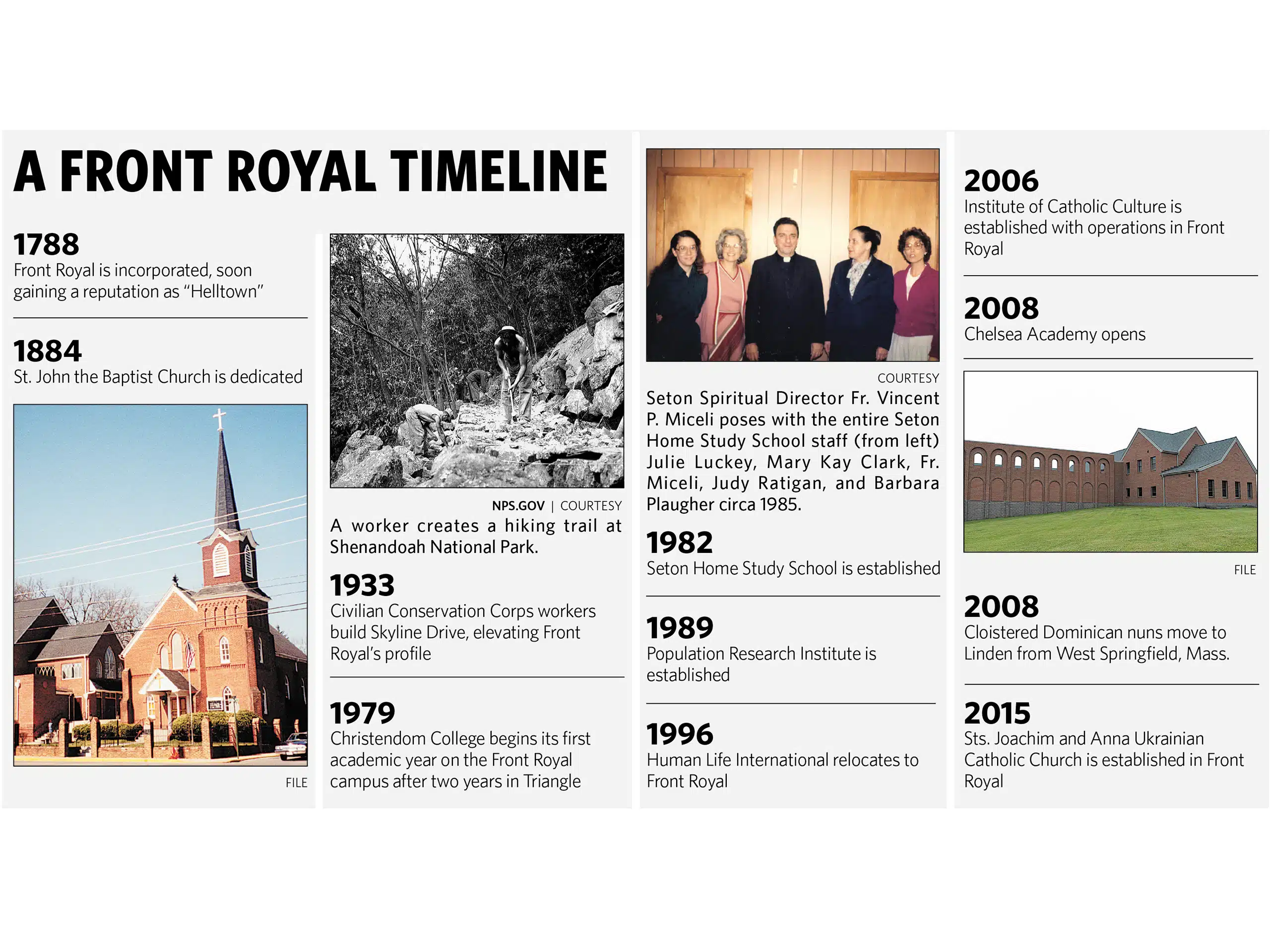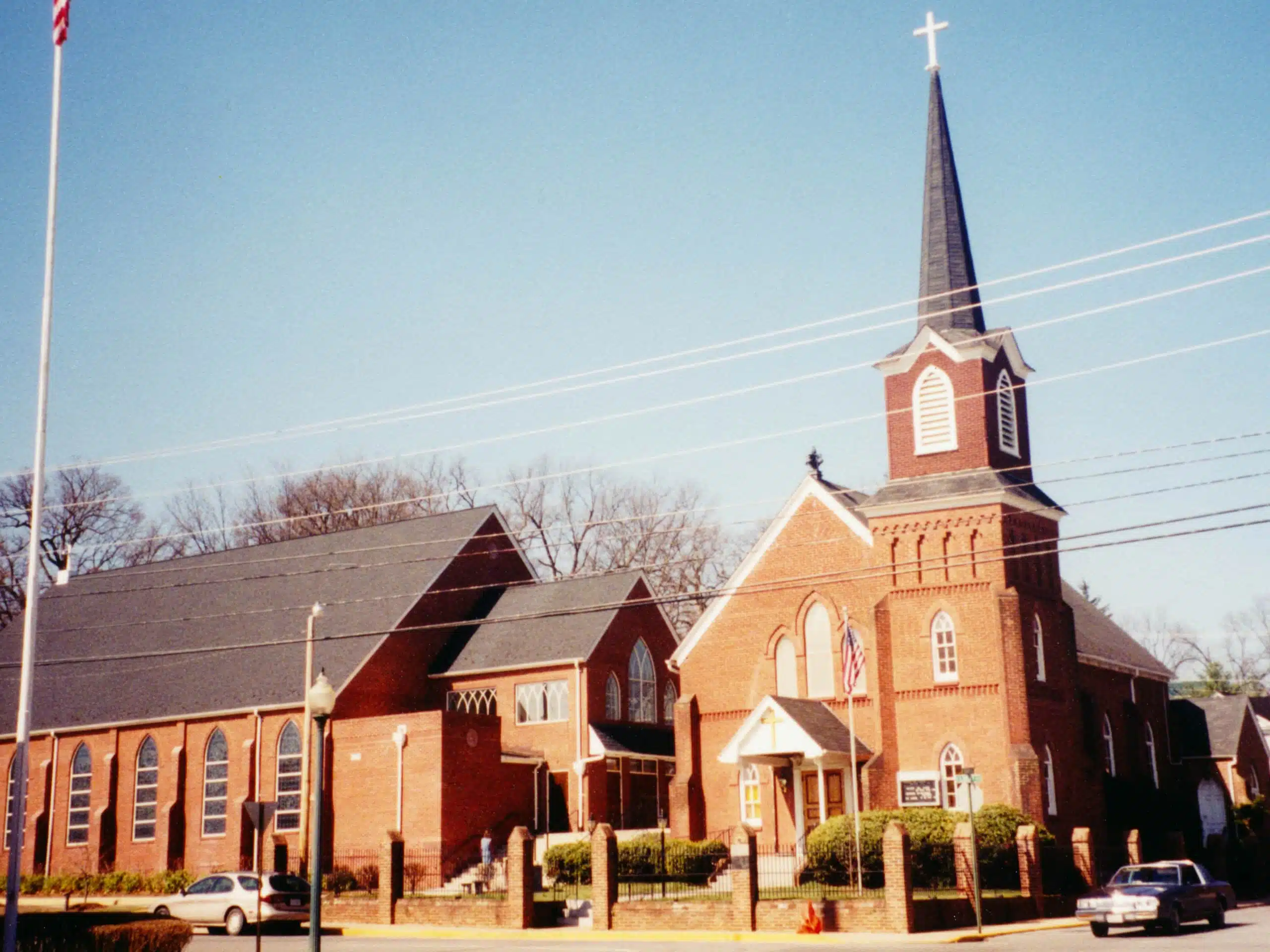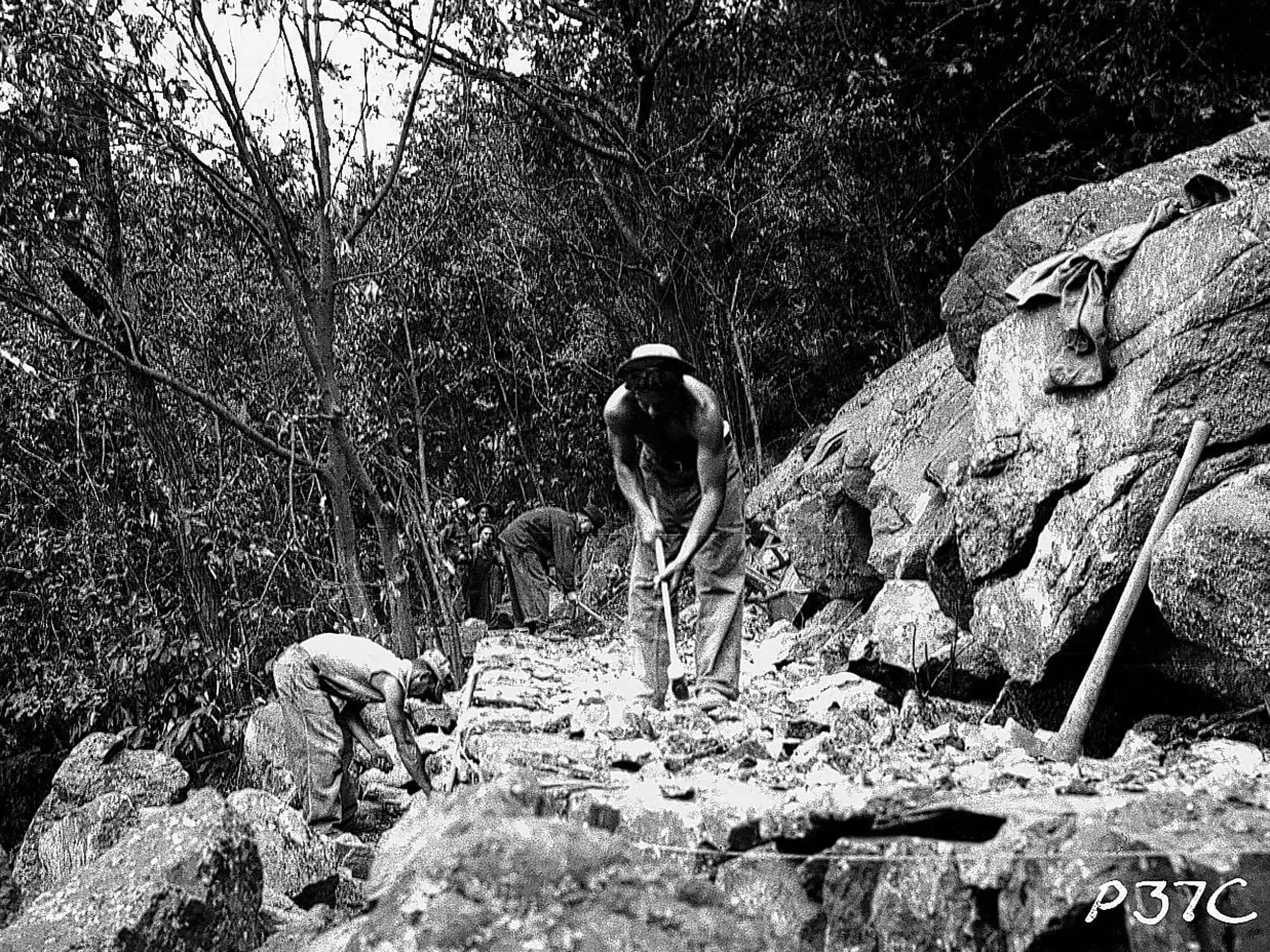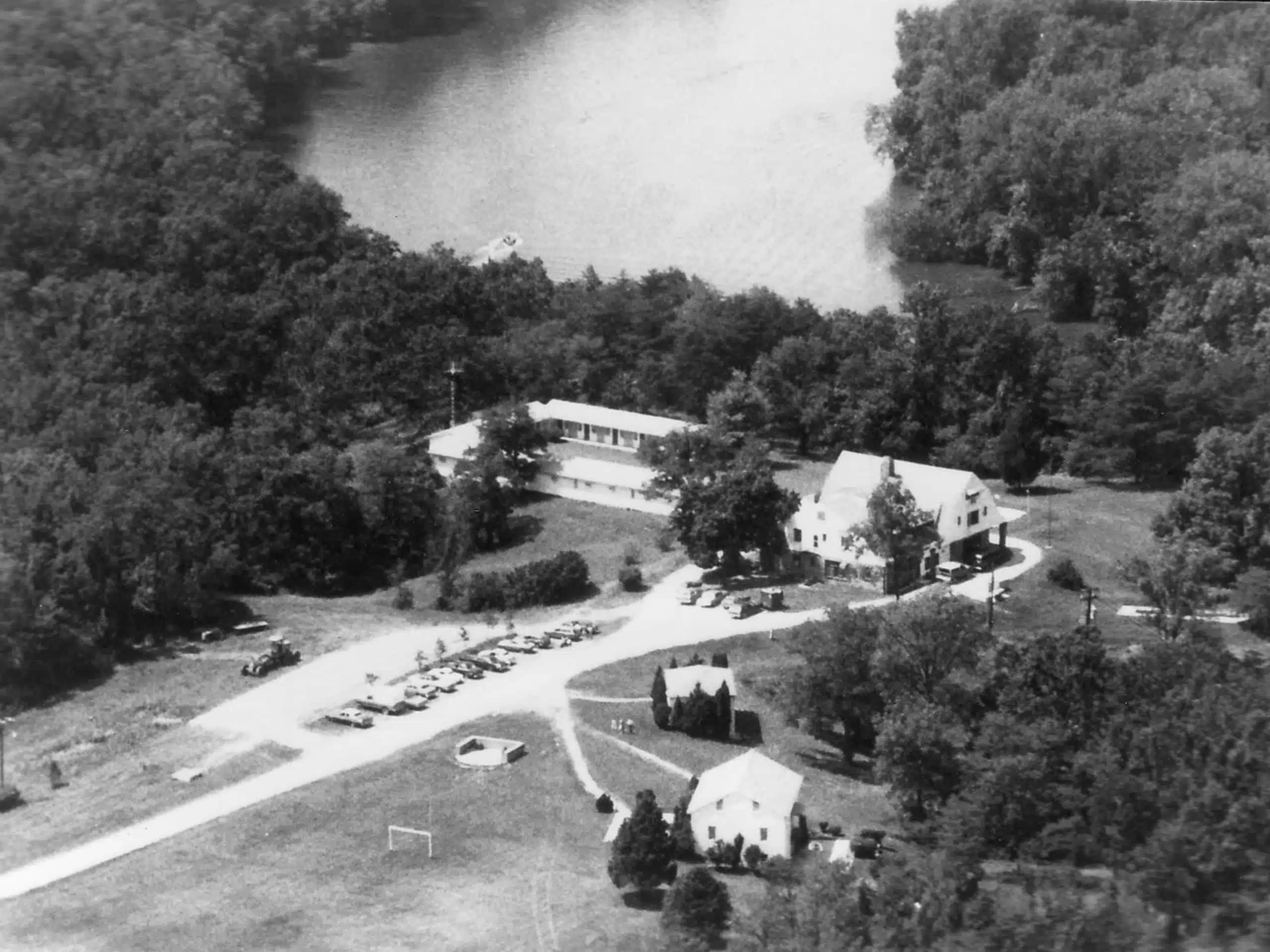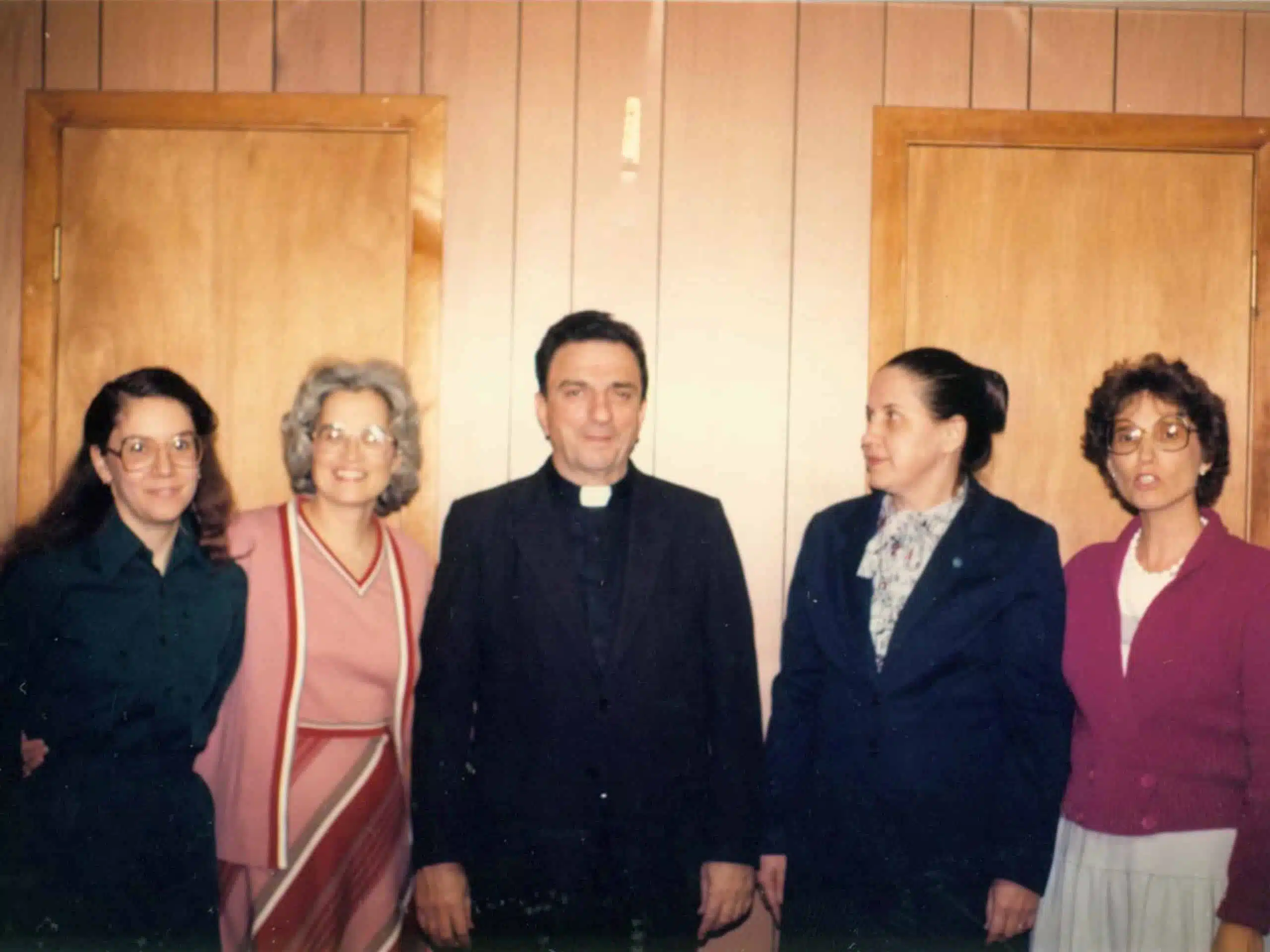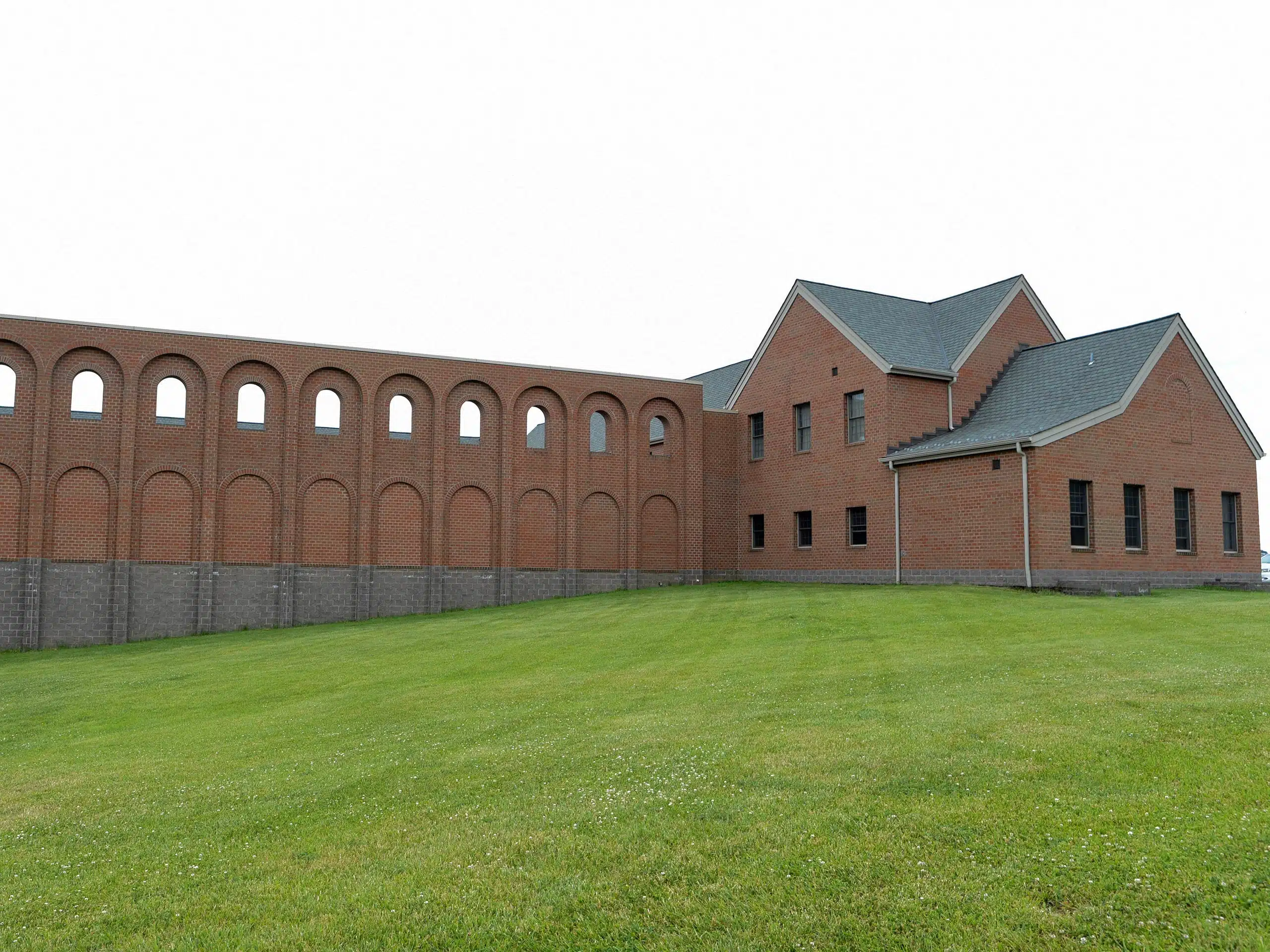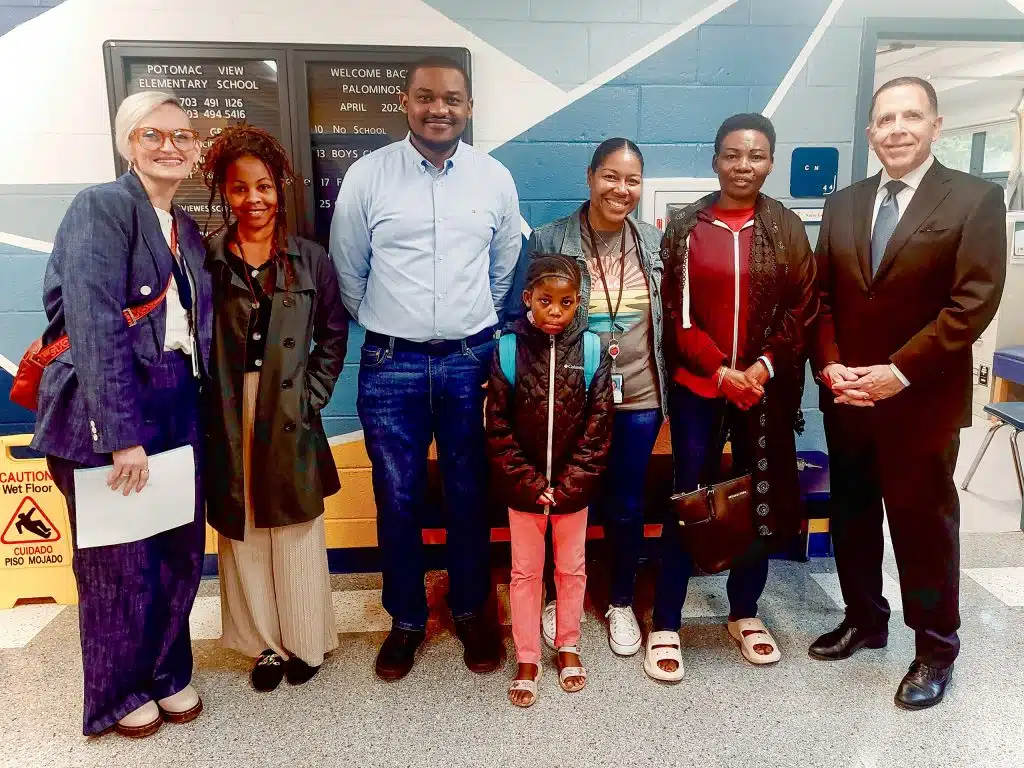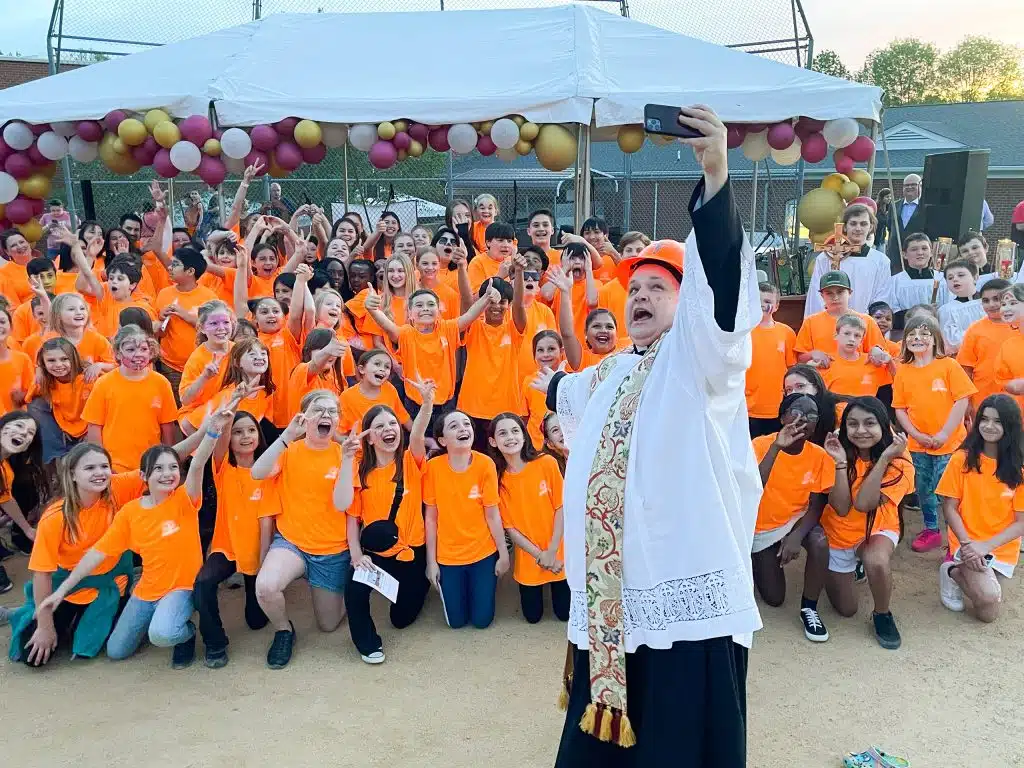What was once known as “Helltown” in the late 18th century — due to the working men who ventured over from the nearby Shenandoah River seeking alcohol — has emerged in the 21st century as a place for thousands of Catholics seeking a deeper relationship with God and one another.
Front Royal is the seat of Warren County, which grew more than 10 percent between 2010 and July 2022, according to the Census Bureau, bringing the population to 41,440. New faces at St. John the Baptist Church in Front Royal are growing at a faster clip lately. Nearly 1,000 new people have registered with the parish this year compared to 2020, raising the number of total parishioners from 4,559 to 5,552 — a 21 percent increase. While some are graduates of or affiliated with nearby Christendom College, others have no connection to the school. Eager to join the growing Catholic community, some even have bought homes through local real estate agents site unseen.
“I’ve talked to dozens of these families,” Father Michael R. Duesterhaus, a parochial vicar at St. John, said between Masses June 25. “They’re moving specifically to come to Front Royal. They want to be in a community where their kids are going to be supported.”
The influx to the northern edge of the Blue Ridge Mountains is at odds with national opinion surveys suggesting a rise in so-called “nones” — those without any affiliation to organized religion. While some denominations may be losing members due to disaffiliation, there are a growing number of Catholic institutions at least in this region. John Paul the Great Montessori Academy rents space in a Methodist church with declining attendance. Sts. Joachim and Anna Ukrainian Catholic Church celebrates weekly divine liturgies in a former Baptist church.
Approximately 30 Masses are celebrated each week collectively by parish staff and visiting clergy, between the parish chapel, local Catholic schools, St. Dominic’s Monastery in nearby Linden and occasionally Human Life International, a Catholic pro-life nonprofit. Father Duesterhaus credited Father Daniel N. Gee, pastor, and previous pastors, including Father Edward C. Hathaway and Father William Ruehl, for the parish’s growth, reverent liturgy and abundant confession opportunities (six days each week).
Edward and Michelle Kotulski joined the parish last fall, initially drawn to the area by Chelsea Academy, which offers a Catholic liberal arts education to grades K-12. Their two daughters attend. While living in Hawaii during Edward’s U.S. Marine Corps assignment there, Michelle discovered Chelsea online while researching the family’s plans to return to Virginia. They appreciate the parish’s traditional liturgy and worship.
“It’s a little gem,” she said. “It’s kind of hidden. You don’t really know that it’s here and how good the community is until you move here.”
Where it began
Longtime residents said that a series of successive developments in recent decades produced a snowball effect to raise Front Royal’s profile as a Catholic destination.
The earliest was the establishment of Christendom College’s campus in 1979. The college was founded by Warren H. Carroll two years earlier with an agreement to operate temporarily at St. Francis of Assisi Church in Triangle.
As college leaders searched for a permanent location, Thomas McFadden, then-president of Virginia Right to Life, suggested a facility in Front Royal used to train union organizers. The site, owned by the AFL-CIO (then led by George Meany), featured residential space, a kitchen and a swimming pool, and was managed by a fellow parishioner of McFadden’s. At the prompting of Arlington Bishop Thomas J. Welsh, retired Washington Archbishop Cardinal O’Boyle called Meany, a longtime friend, to advocate for Christendom’s bid to purchase the property. The bid was eventually accepted at a discounted rate, according to a history published on the college’s website.
No other location was ever seriously considered, said Anne Carroll, executive director of the Seton School in Manassas, who supported her husband Warren’s efforts to found the college. “It was a beautiful place and it met all our needs at the beginning,” she said.
While she called her late husband a long-term planner, the developments at Front Royal’s exceeded anyone’s expectations. “I don’t think even he with all his vision would have foreseen the rapid growth,” she said. “He would have been vastly overjoyed.”
She credited current President Tim O’Donnell’s “vital” work growing the college from its beginnings in her living room. “We started with nothing,” she said. “God is good all the time.”
Homeschool boom
Another building block for the growth to come was Anne’s establishment of Seton Home Study School in 1982, a program for homeschooling families that extended Seton School’s approach to Catholic education beyond Manassas. Soon, it was headquartered in Front Royal, with Mary Kay Clark as director and, later, separately incorporated. Demand for its educational resources surged, and more homeschool families came to the area.
By the time Tom McFadden moved to Front Royal in 2000, it was well-established as a magnet for homeschooling families who wanted to commune with like-minded Catholics. McFadden, Christendom’s vice president for enrollment and student success and a St. John parishioner, said that the rising cost of housing reached the point around 2005 that more people were willing to take on longer commutes, including the 70-mile trip to Washington. The growing population led national retail chains to open local operations.
“There was life and vibrancy and things to do in Front Royal and in the area,” he said, which led more of the college’s students to stay after graduation and other alumni to move back.”
During the COVID-19 pandemic, Northern Virginia lockdowns fueled another surge in interest and real estate transactions, McFadden said.
The community has produced many vocations to religious life. Christendom counts 23 alumni priests in the Arlington diocese. In the past four years, St. John has hosted seven first Masses of priestly sons of the parish.
Father Philip Briggs is among them. His mother, Nancy, moved to Front Royal in the mid-1980s when her husband, Doug, took a job at the college. She said the parish population was elderly and there were few young families. Scanning the congregation for teen girls who could babysit her young children, she could identify just three potential candidates — and two were sisters. She said the composition of newcomers is broader than just homeschoolers now, with more singles and younger people relocating here.
Catholic schooling evolves
In 2008, Chelsea Academy opened, giving parents a Catholic education alternative to homeschooling. It expanded over the years to offer kindergarten through high school, and paved the way for a half-dozen other Catholic learning options, including all-boys, all-girls, Montessori and hybrid. Chelsea is moving to another location after recently concluding its last academic year on the campus of Human Life International, which has leased space to many Catholic organizations or Catholic-owned businesses since relocating from Gaithersburg, Md., to Front Royal in 1996. The Institute for Catholic Culture will move into the space Chelsea is vacating, said John Martin, chief advancement officer for HLI.
The large families and passenger vans may still occasionally raise eyebrows and turn heads among some locals, according to McFadden. As more Catholics relocate to the area and staff restaurants, buy real estate and pay taxes, however, their growing profile has increased awareness and acceptance overall.
“A perfect storm got it together,” McFadden said.
Schweers can be reached at [email protected].
A Front Royal timeline
1788 – Front Royal is incorporated, soon gaining a reputation as “Helltown”
1884 – St. John the Baptist Church is dedicated
1933 – Civilian Conservation Corps workers build Skyline Drive, elevating Front Royal’s profile
1979 – Christendom College begins its first academic year on the Front Royal campus, after two years in Triangle
1982 – Seton Home Study School is established
1989 – Population Research Institute is established
1996 – Human Life International relocates to Front Royal
2006 – Institute of Catholic Culture is established with operations in Front Royal
2008 – Chelsea Academy opens
2008 – Cloistered Dominican nuns move to Linden from West Springfield, Mass.
2015 – Sts. Joachim and Anna Ukrainian Catholic Church is established in Front Royal
